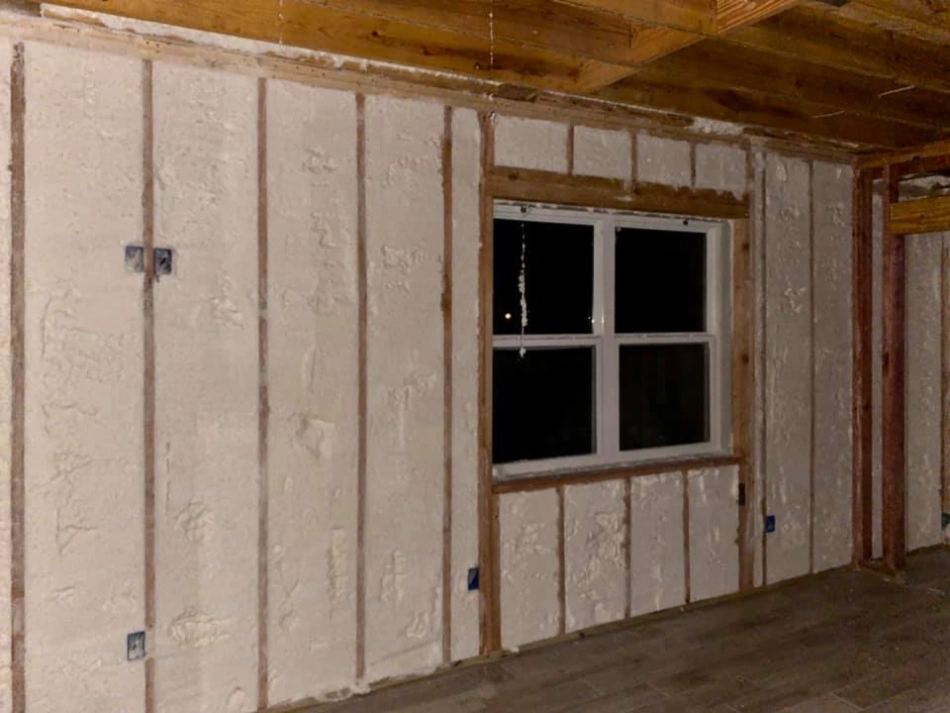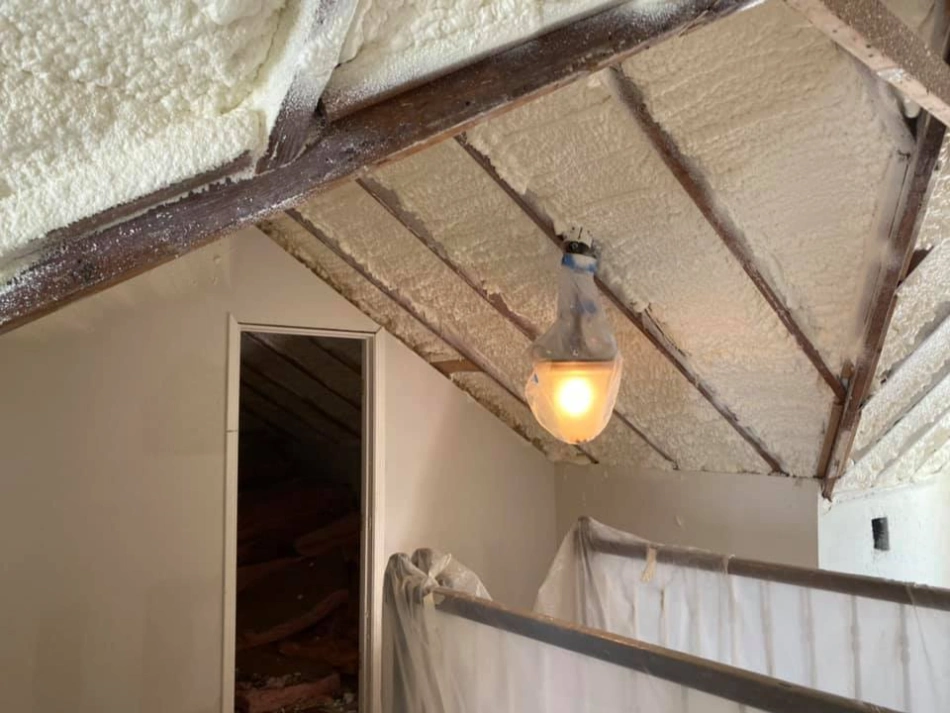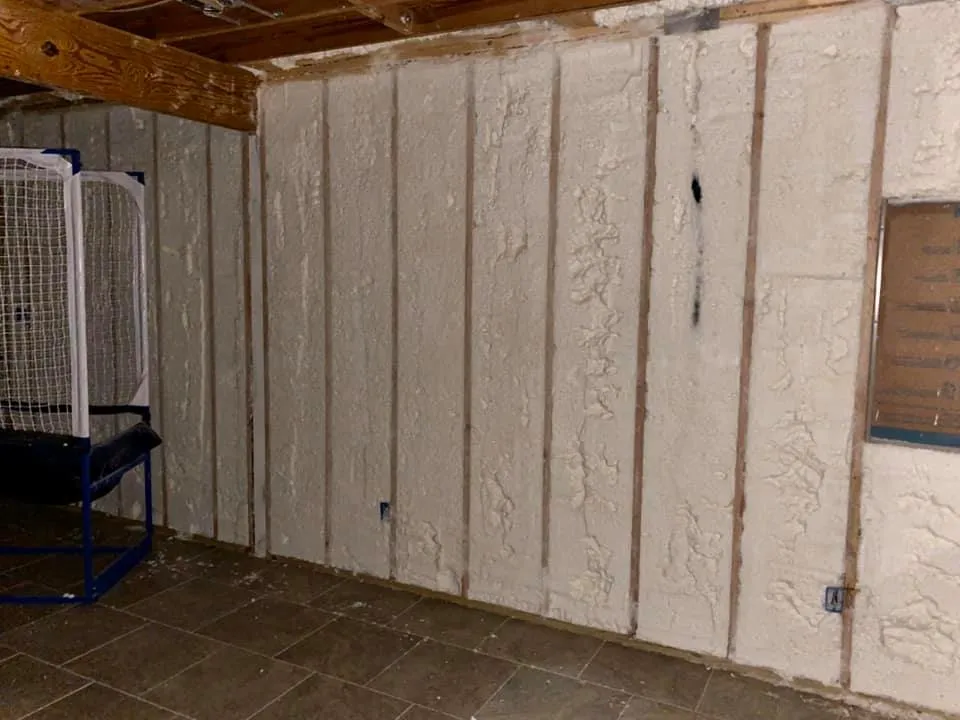Band joists, rim joists, knee walls, and cantilevered floors represent the most commonly overlooked residential spaces for spray foam application. These areas create significant thermal bridges and air leakage points that undermine whole-house energy efficiency, yet homeowners frequently focus only on obvious spaces like attics and basements. Professional assessments reveal these hidden zones can account for up to 25% of total home energy loss.
Understanding these overlooked areas becomes critical for achieving optimal thermal performance and preventing moisture-related issues. Years of field experience demonstrate that addressing these spaces during initial insulation projects delivers substantially better results than retrofitting them later.
Primary Overlooked Areas That Impact Performance
Band joists and rim joists create continuous thermal bridges around the perimeter of homes. These structural elements connect floor systems to foundation walls, creating gaps that allow significant air movement between conditioned and unconditioned spaces. The Department of Energy identifies these areas as responsible for approximately 15-20% of air leakage in typical homes.
Knee walls in finished attics present another frequently missed opportunity. These short walls separate conditioned living spaces from unconditioned attic areas, yet builders often install minimal insulation behind them. The irregular geometry makes traditional batt insulation ineffective, leaving gaps that compromise thermal boundaries.
Cantilevered floors and bay windows extend beyond the main foundation, creating three-sided exposure to exterior conditions. These architectural features challenge conventional insulation methods due to limited access and complex framing configurations.
Bonus Tip: Use thermal imaging during cold weather to identify these problem areas. Temperature differences greater than 10°F between interior surfaces indicate inadequate insulation performance.
| Overlooked Space | Typical Energy Loss | Access Difficulty | Retrofit Complexity |
|---|---|---|---|
| Band/Rim Joists | 15-20% of total loss | Moderate | High |
| Knee Walls | 10-15% of total loss | Difficult | Very High |
| Cantilevered Floors | 8-12% of total loss | Very Difficult | Extreme |
| Basement Headers | 5-8% of total loss | Easy | Low |
| Attic Penetrations | 3-5% of total loss | Moderate | Moderate |
Hidden Problem Areas in Basements and Crawlspaces
Basement sill plates and headers connect foundation walls to floor framing systems. These connections create numerous small gaps that collectively impact air sealing effectiveness. Traditional caulking approaches prove inadequate for the irregular surfaces and movement joints typical in these locations.
Crawlspace perimeters often receive insufficient attention during initial construction. Builders may insulate crawlspace walls but neglect the critical junction where walls meet floor systems. This oversight creates continuous air pathways that reduce insulation effectiveness throughout the home.
Ductwork chases and utility penetrations in these spaces compound air sealing challenges. HVAC installations frequently require cutting through insulated assemblies, creating paths for air movement that compromise thermal boundaries.
Bonus Tip: Address basement and crawlspace issues before finishing these spaces. Retrofit applications require removing finished surfaces and rebuilding thermal boundaries.
Attic Areas Beyond Standard Applications
Attic knee walls behind finished spaces create unique insulation challenges. Standard batt insulation cannot conform to the irregular framing and provides minimal air sealing. The Building Performance Institute reports that poorly insulated knee walls can increase heating and cooling loads by 20-30% in finished attic spaces.
Gable end walls in conditioned attics often receive inadequate insulation coverage. These vertical surfaces connect to roof assemblies at complex angles that challenge traditional insulation methods. Air movement through these connections affects comfort and energy performance throughout the home.
Dormers and roof projections create additional thermal bridging opportunities. The multiple angles and surfaces in these features make complete insulation coverage difficult with conventional materials.
| Technical Specifications | Open Cell Foam | Closed Cell Foam | Traditional Batts |
|---|---|---|---|
| R-Value per inch | 3.6-3.8 | 6.0-6.5 | 3.1-3.4 |
| Air Sealing Capability | Excellent | Superior | Poor |
| Moisture Barrier Properties | Limited | Complete | None |
| Conformability to Irregular Surfaces | Excellent | Excellent | Poor |
| Application in Tight Spaces | Good | Good | Very Poor |
Complex Architectural Features
Bay windows and bump-outs extend beyond standard building envelopes, creating multiple thermal bridge opportunities. These features typically have three exterior-facing surfaces with limited access for insulation installation. The irregular framing patterns make achieving continuous thermal boundaries extremely challenging.
Stairway soffits and dropped ceilings create hidden cavities that builders often leave uninsulated. These spaces connect directly to exterior walls or unconditioned areas, allowing air movement that undermines adjacent insulated assemblies.
Cathedral ceilings with complex angles and intersections present access limitations for traditional insulation methods. The combination of limited space and irregular surfaces makes achieving consistent coverage difficult without spray foam applications.
Things to Consider Before Addressing Overlooked Spaces
Evaluate existing moisture conditions before applying spray foam in any overlooked area. Closed-cell applications create vapor barriers that can trap existing moisture problems, leading to structural damage over time. Professional moisture assessments identify potential issues before insulation installation.
Access requirements significantly impact project complexity and material selection. Some overlooked areas require removing finished surfaces or creating new access points. Understanding these requirements helps determine realistic project scope and timing.
Building code compliance varies by location and application type. Local jurisdictions may have specific requirements for vapor barriers, fire ratings, or ventilation that affect material choices and installation methods.
Climate zone considerations influence material selection and application thickness. Cold climates may require vapor barrier properties that favor closed-cell applications, while mixed climates might benefit from vapor-permeable open-cell solutions.
Bonus Tip: Schedule overlooked area treatments during major renovation projects when access is already available. This approach minimizes disruption and reduces overall project costs.

Professional Services Stellrr Provides
- Residential Spray Foam Insulation: Complete thermal boundary solutions for new construction and retrofit applications, including overlooked spaces that traditional methods cannot address effectively.
- Crawlspace Insulation: Comprehensive moisture control and thermal barrier systems designed for the unique challenges of below-grade spaces and irregular foundation geometries.
- Attic Insulation: Advanced applications for complex roof assemblies, including knee walls, dormers, and cathedral ceilings that require specialized access and installation techniques.
- Insulation Removal: Professional removal of existing insulation materials to access overlooked areas and prepare surfaces for optimal spray foam application.
Common Questions About Overlooked Insulation Areas
Homeowners frequently ask about identifying these hidden problem areas without major demolition. Thermal imaging surveys conducted during temperature differentials reveal heat loss patterns that indicate inadequate insulation in specific locations. Professional energy audits include blower door testing that quantifies air leakage and helps prioritize improvement areas.
Questions about retrofit complexity often arise when homeowners discover these overlooked spaces after initial construction. Accessing band joists, knee walls, and cantilevered areas typically requires removing finished surfaces or creating new access points. Planning these improvements during other renovation work minimizes disruption and reduces overall project costs.
Material selection questions focus on choosing between open-cell and closed-cell applications for specific overlooked areas. Closed-cell foam provides superior moisture control and structural enhancement but costs more than open-cell alternatives. The decision depends on specific performance requirements, climate conditions, and budget considerations.
Summary
Addressing overlooked residential spaces transforms whole-house energy performance beyond what standard attic and basement insulation alone can achieve. Band joists, knee walls, cantilevered floors, and complex architectural features represent significant improvement opportunities that conventional materials cannot address effectively. Professional assessment identifies these areas and determines optimal treatment approaches based on access requirements, moisture conditions, and performance goals.
Get Professional Assessment for Your Home’s Hidden Energy Loss Areas
Professional evaluation identifies overlooked spaces that impact your home’s energy performance and comfort. Thermal imaging and air leakage testing reveal specific problem areas that benefit from spray foam applications. Understanding these hidden opportunities helps prioritize improvements that deliver maximum benefit for your investment.
Contact Stellrr at (512) 710-2839 or info@stellrr.com to schedule a comprehensive assessment of your home’s thermal boundary performance. Professional expertise ensures proper material selection and application methods for lasting results.
Understanding Overlooked Insulation Applications
Which spaces get missed most often during initial construction?
Band joists and rim joists top the list because builders focus on obvious cavities rather than structural connections. These perimeter elements create continuous thermal bridges that affect whole-house performance, yet they receive minimal attention during standard construction practices.
How do overlooked areas impact overall energy bills?
Collectively, these hidden spaces can account for 25-40% of total home energy loss. Band joists alone contribute 15-20% of air leakage, while knee walls and cantilevered areas add another 10-20%. Addressing these areas often provides better return on investment than upgrading standard insulation.
When should homeowners address these overlooked spaces?
Optimal timing occurs during major renovations when access is already available. Retrofit projects require removing finished surfaces, making standalone treatments disruptive and expensive. Planning these improvements with kitchen, bathroom, or basement finishing projects maximizes efficiency.
What makes spray foam superior for these applications?
Spray foam conforms to irregular surfaces and provides simultaneous insulation and air sealing. Traditional batts cannot address the complex geometries and air leakage paths typical in overlooked areas. The expanding properties ensure complete coverage in tight spaces where other materials leave gaps.
Are there any risks with spray foam in overlooked areas?
Moisture management requires careful evaluation before closed-cell applications. These spaces may have existing moisture issues that vapor barriers can trap, leading to structural problems. Professional assessment identifies potential concerns and determines appropriate material selection for specific conditions.





